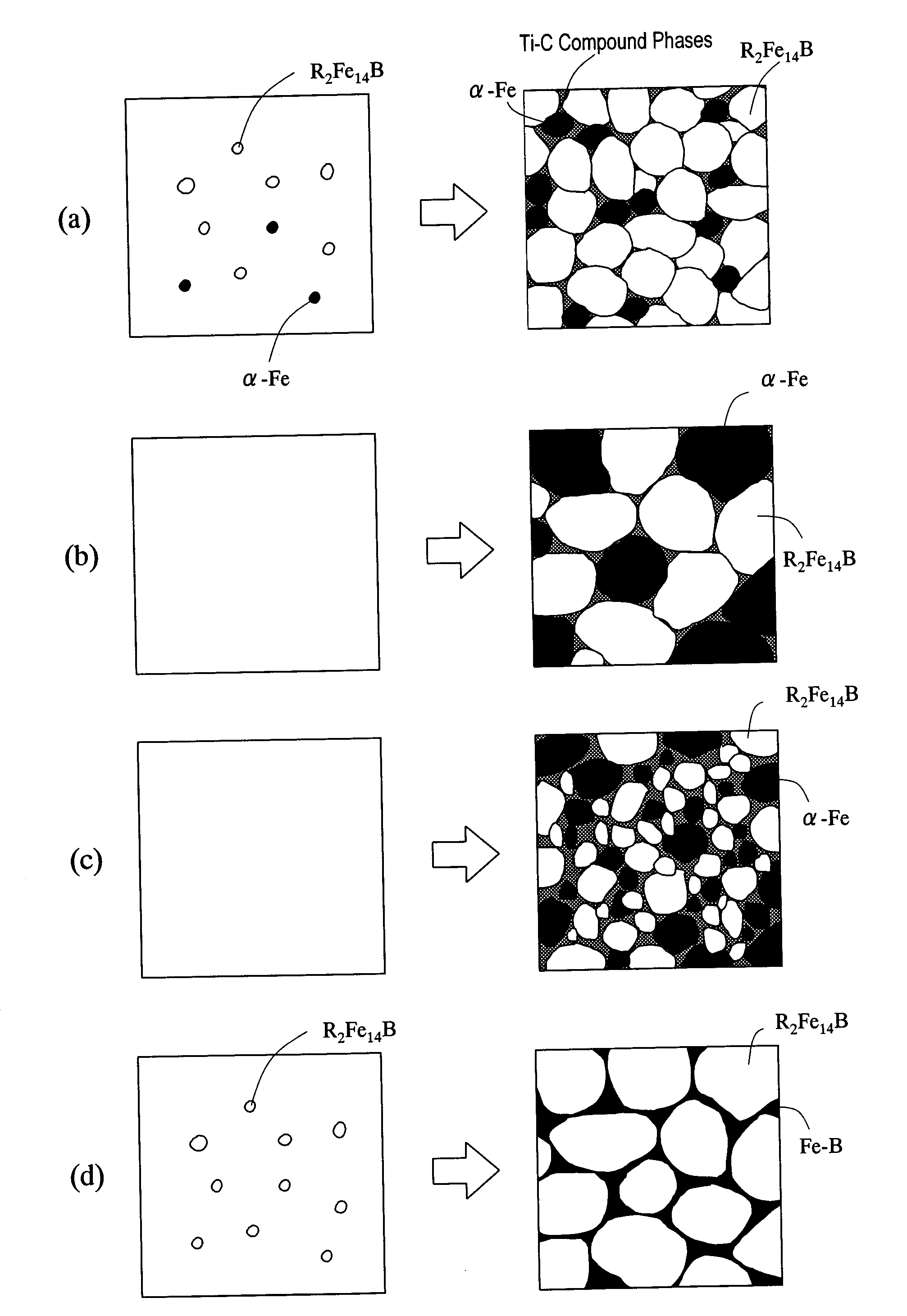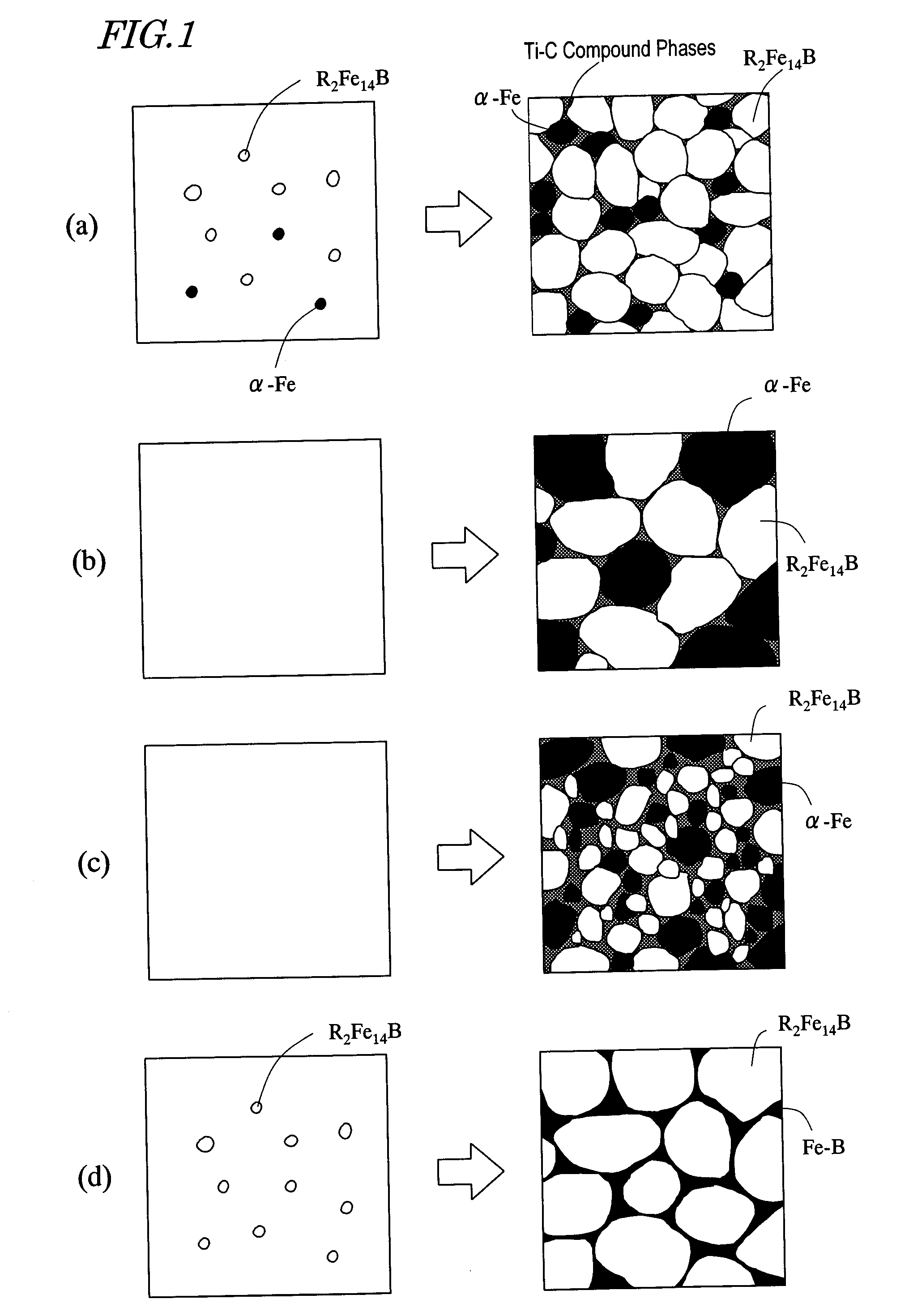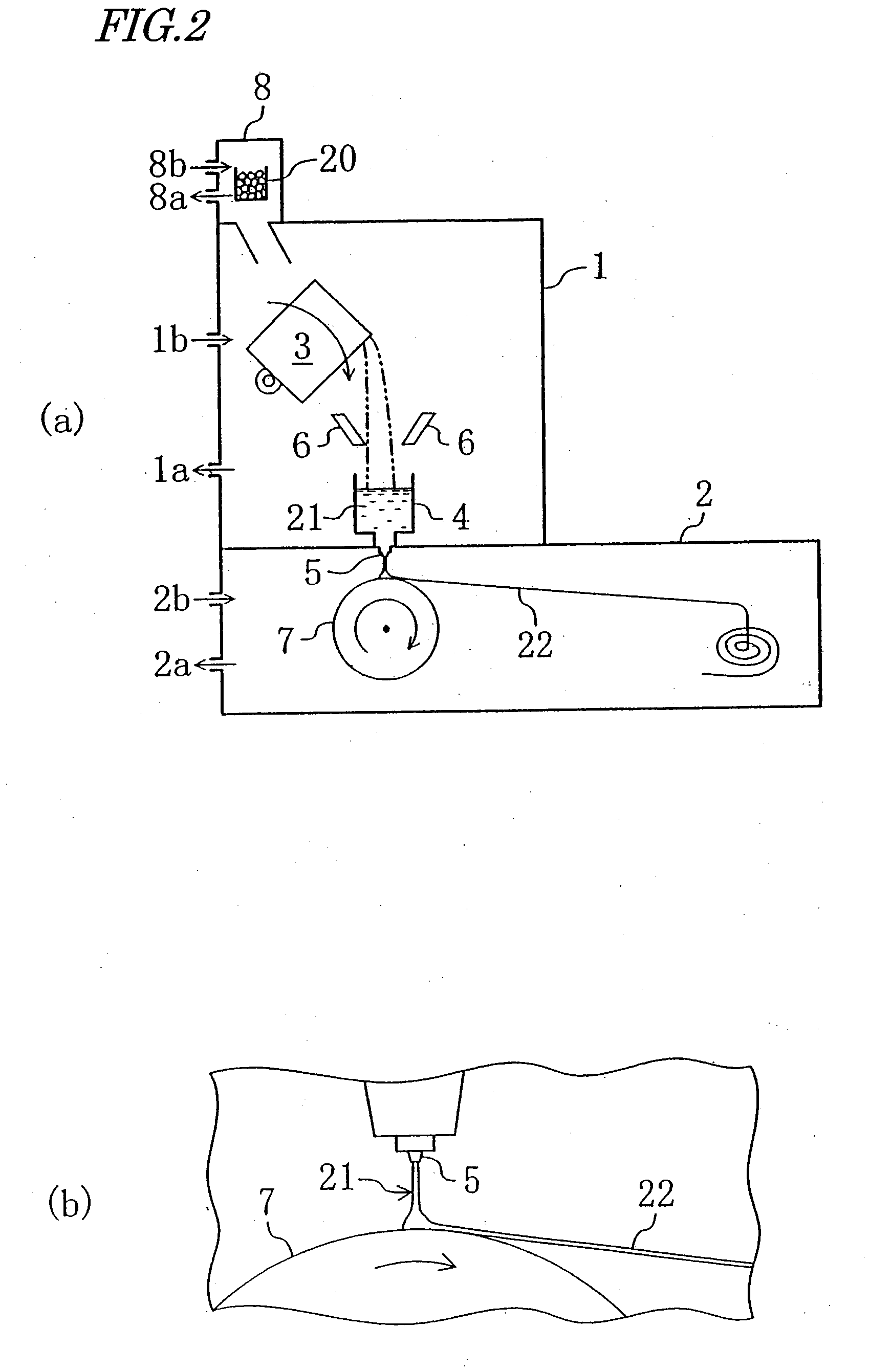Iron-based rare-earth-containing nanocomposite magnet and process for producing the same
- Summary
- Abstract
- Description
- Claims
- Application Information
AI Technical Summary
Benefits of technology
Problems solved by technology
Method used
Image
Examples
examples
[0081]30 g of material, in which respective elements Nd, Pr, B, C, Ti, Co, Zr, V and Fe, each having a purity of 99.5% or more, were mixed together so as to have any of the compositions shown in the following Table 1, was put into a nozzle of transparent quartz. This nozzle had an orifice with a diameter φ of 0.8 mm at the bottom, under which a rotating chill roller was arranged.
[0082]Thereafter, the material in the nozzle was melted by an induction heating process within an Ar atmosphere, thereby preparing a molten alloy. After the temperature of the melt had reached 1,400° C., the surface of the melt was pressurized at 30 kPa, thereby ejecting the molten alloy through the orifice at the bottom of the nozzle onto the surface of the roller. The surface velocity of the chill roller was adjusted to any of the values shown in Table 1. The molten alloy that had contacted with the surface of the chill roller was quenched by the chill roller, thereby forming a thin-strip rapidly solidifie...
PUM
| Property | Measurement | Unit |
|---|---|---|
| Grain size | aaaaa | aaaaa |
| Grain size | aaaaa | aaaaa |
| Grain size | aaaaa | aaaaa |
Abstract
Description
Claims
Application Information
 Login to View More
Login to View More - R&D
- Intellectual Property
- Life Sciences
- Materials
- Tech Scout
- Unparalleled Data Quality
- Higher Quality Content
- 60% Fewer Hallucinations
Browse by: Latest US Patents, China's latest patents, Technical Efficacy Thesaurus, Application Domain, Technology Topic, Popular Technical Reports.
© 2025 PatSnap. All rights reserved.Legal|Privacy policy|Modern Slavery Act Transparency Statement|Sitemap|About US| Contact US: help@patsnap.com



